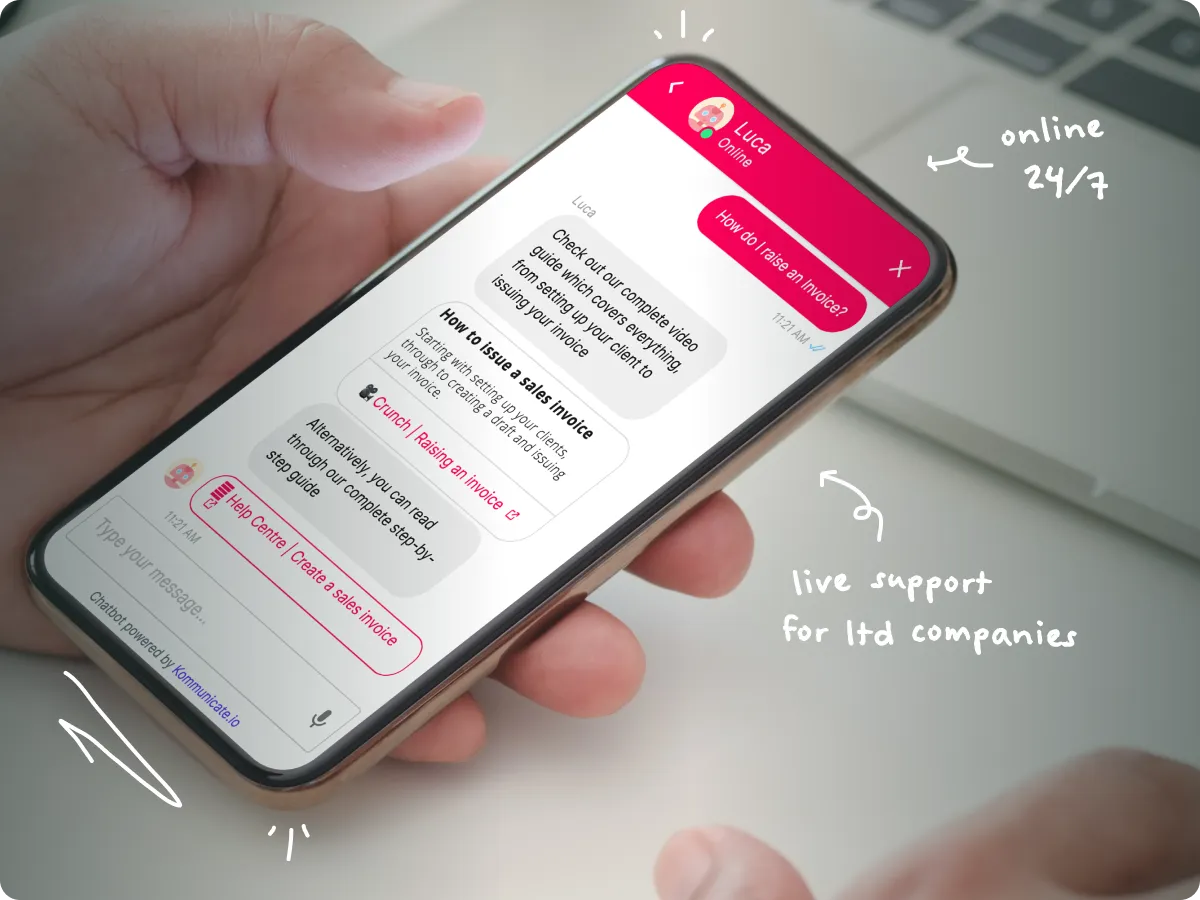Ahh, VAT – most people have heard of it, but not many understand it, and we know that it’s confusing for many self-employed contractors and small business owners.
VAT stands for value-added tax, which is a charge placed on goods and services by businesses with a turnover that exceeds the ‘VAT threshold’. Understanding what the VAT threshold is and whether it applies to you is important for every business owner.
Failing to recognise that your business is above the threshold and eligible for VAT is bad news, as you’ll have to repay VAT to HMRC even though you haven’t been charging it – leaving you out of pocket. You may even face further consequences such as a late notice fine or a civil evasion penalty.
Luckily, we’ve got you covered. On this page, we’ve explained what the VAT threshold is and how it impacts you. If you think your business has hit this threshold, click here to jump straight into our guide to how to register for vat.
What is the VAT threshold?
The VAT threshold is a set amount of revenue that UK businesses can earn before they must register for VAT. A business that is VAT-registered must charge an additional percentage fee on their goods and services, which is then repaid to HMRC.
The current VAT threshold is set at £85,000 and is confirmed until March 2024. The threshold is strictly associated with turnover, not profits – so you can't use tax reliefs or capital allowances to avoid becoming eligible for the VAT scheme.
The VAT threshold used to rise each year until 2017, when it reached the £85,000 threshold it remains at in 2023. Businesses with turnover greater than £85,000 must register for VAT, though some businesses that don’t meet the threshold may also voluntarily opt in to VAT in order to access some benefits.
To check whether the VAT threshold applies to your business, you must consider two factors:
- Has your business earned total revenue of £85,000 or more during any 12-month period?
- Will your business’ total revenue exceed the threshold within the next 30 days?
If either of the above is true, you must register for VAT as soon as possible to avoid penalties.
Voluntarily registering for VAT
If your revenue doesn’t hit the threshold, you can still voluntarily opt in for the VAT system. This is typically only beneficial if your business involves working almost exclusively with other VAT-registered businesses that charge VAT on their goods/services and expect you to do the same.
Mandatory VAT registration without a threshold
Some businesses have to register for VAT regardless of their revenue, though only if they are not UK-based and meet a certain set of conditions. To be eligible for VAT registration, all of the following conditions must be true:
- The business must be based outside of the UK
- The owner of the business must also be based outside of the UK
- The business supplies goods or services into the UK, or expects to within 30 days.
What if a business temporarily exceeds the threshold?
In most cases, any business that exceeds the £85,000 earnings threshold in any 12-month period must register for VAT. However, some businesses experiencing a certain spike in earnings might see their revenue temporarily exceed the threshold and then quickly fall below it.
If that situation applies to you, you’ll need to contact HMRC with proof that your turnover will remain below the threshold for the next 12 months. You can then discuss your case and ask for an ‘exception’ for registration.
VAT schemes and revenue thresholds
Depending on what your total revenue comes to, you may wish to opt into different VAT schemes. VAT schemes define how your business should charge and repay VAT.
When you register for VAT, you have a few choices around which scheme you will use to govern how you report on and pay your VAT. The default is the standard rate VAT scheme, which involves reclaiming VAT on every eligible item you buy or sell.
HMRC calculates your VAT payment by deducting VAT-invoiced sales from VAT-invoiced purchases. You’ll completed a quarterly VAT return when using the standard rate.
There are, however, other schemes which are designed to offer alternatives for how a business must report and repay VAT. These are subject to the following thresholds.
The cash accounting scheme is an alternative method where you only calculate VAT on sales invoices which have been paid, or when you have paid purchase invoices. This system works like the standard rate scheme and is done quarterly, but differs as it only counts VAT when monies have been paid, rather than simply whenever an invoice has been issued.
The VAT annual accounting scheme cuts down on the administrative side of VAT as it allows you to file a VAT return once a year. Despite only having to report VAT once per year, you still have to make regular payments based on an estimate from your previous year’s tax bill. This scheme helps reduce the paperwork you need to do and gives you foresight around VAT repayments spread across the year.
The Flat Rate VAT scheme is open to businesses with an expected turnover of less than £150,000 (in the next 12 months) and was introduced to simplify the VAT system for freelancers, contractors, and small businesses.
On the Flat Rate VAT scheme, you’ll use a predetermined VAT rate based on your industry type and pay this over to HMRC.
First, you add the Standard VAT rate of 20% to your sales invoice amount, then you collect the full amount from your client.
Next, apply your sector percentage to this (gross) amount, which is then paid over to HMRC via a VAT return. The difference between the two rates is retained by your business as income.
There’s a range of VAT rates for specific industry types available below. We’ve also got an article explaining the Limited Cost Trader Test that is used by many “labour-only businesses” such as contractors.
When you register for the Flat Rate scheme for the first time, HMRC allows you to apply for a 1% discount in the first year.
Generally, when deciding whether to register and on what scheme, you need to look at your turnover, the type of clients you have, and the expenses you incur that you can claim VAT on.
The table below is a guide to which scheme may be more appropriate for you. It’s important to remember that this should only be used as a guide, nothing beats getting direct support from one of our expert accountants to discover what’s best for you and your business.
Do you need to register for VAT?
If you’re concerned about hitting the VAT threshold without being VAT registered, you need to act quickly to avoid penalties. Fortunately, registration is relatively painless, provided you know what to do. Read our guide to how to register for VAT to get a step-by-step overview of the process.
.svg)

.jpeg)




.jpg)



